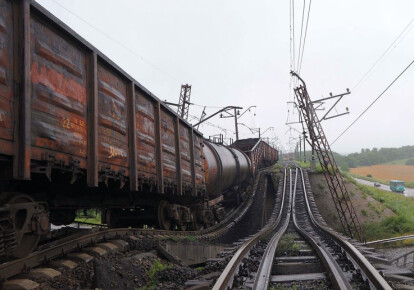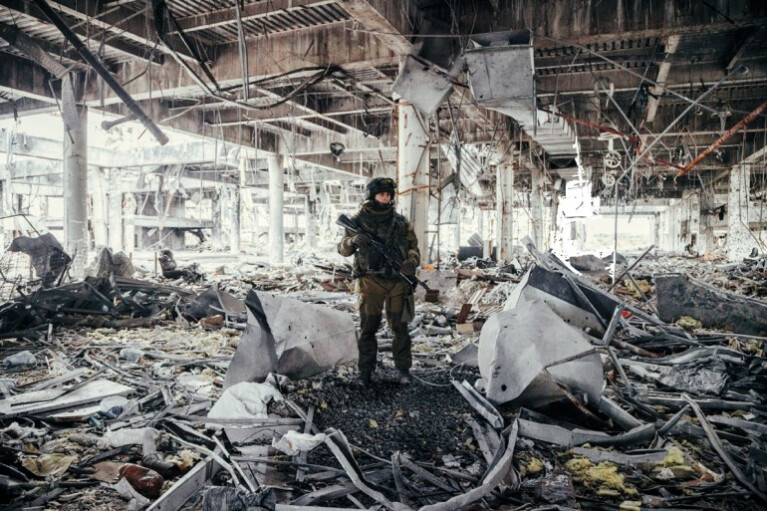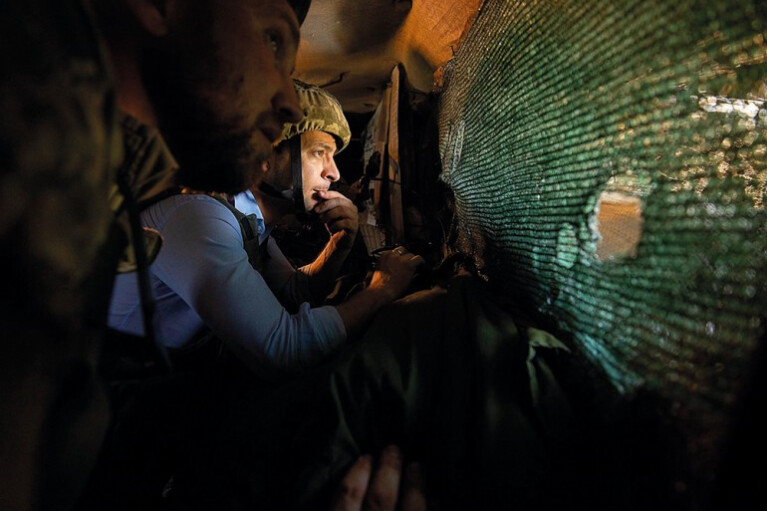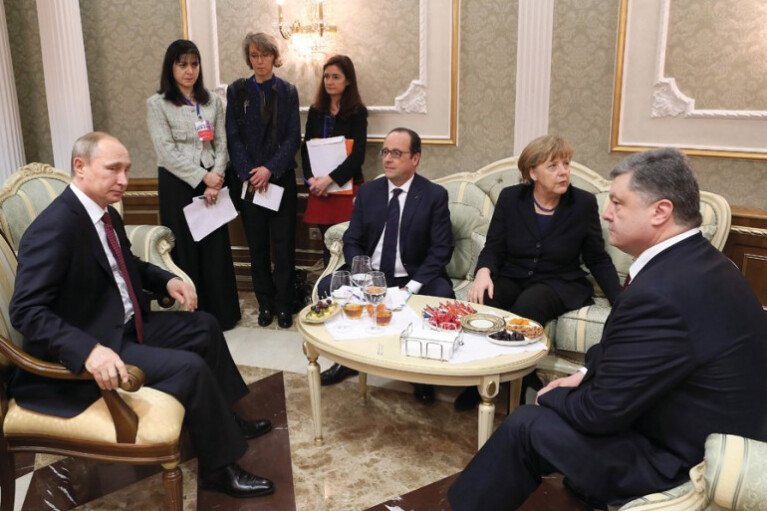What's wrong with the Minsk Arrangements and why it is so

Arrangements without peace
When the OSCE-mediated Minsk Arrangements between Ukraine and the Russian Federation were signed on September 5, 2014, all three parties presented the document as a plan for peace in the Donbas. Such an interpretation had been prompted by the name of the signed document itself: the Protocol based on the consultations of the Tripartite Contact Group on joint steps aimed at the implementation of the Peace Plan of the President of Ukraine P. Poroshenko and the initiatives of the President of Russia V. Putin.
The Protocol contains 12 clauses. Of these, the opening two are about the cessation of hostilities: "1. Provide immediate bilateral cessation of weapons usage. 2. Ensure monitoring and verification of the non-use of weapons regime by the OSCE." And the next 10 clauses are actually the steps to get peace.
In particular, the third clause reads: "3. Decentralize the authorities, in particular through the adoption of the Law of Ukraine "On Temporary Procedure of Local Self-Governance in Certain Areas of Donetsk and Luhansk Regions" (The Special Status Law). This obligation obviously applies to Ukraine. The Verkhovna Rada had implemented it already on September 16, 2014 by adopting the law "On Special Procedure of Local Self-Governance in Certain Areas of Donetsk and Luhansk Regions" (it is still in force).
The following clause reads: "4. Ensure permanent monitoring at the Russian-Ukrainian state border as well as verification by the OSCE with the establishment of a security zone in the border areas of Ukraine and the Russian Federation." Obviously, this obligation applies to Russia - without its consent no monitoring, verification or any security zone in the Donbas occupied territories are possible. Russia has not yet fulfilled this obligation, thereby blocking further implementation of the Protocol.
The second OSCE-mediated Minsk Arrangements between Ukraine and the Russian Federation signed on February 12, 2015 were formally a continuation of the first ones. The document signed at the meeting of the Tripartite Contact Group was called the Complex of the Minsk Arrangements Implementation Measures. Its weight was strengthened by the fact that it had been agreed in Minsk by the leaders of France, Germany, Ukraine and Russia in the format of the Normandy-4 and reinforced by the Declaration of the President of the Russian Federation, the President of Ukraine, the President of the French Republic and the Chancellor of the Federal Republic of Germany in support of the Complex of the Minsk Arrangements Implementation Measures approved in Minsk on February 12, 2015.
The Complex of Measures includes 13 clauses. Of these, the first three are about cessation of hostilities; the last one is about intensification of the Tripartite Contact Group activities; and the rest nine clauses are actually the steps towards peace.
However, there is no peace in the Donbas so far. Although shortly after the second Minsk Arrangements (to be more precise, after the Russian occupation forces had captured Debaltseve), the hottest phase of the war ceased, but in general the Complex of Measures dated February 12, 2015 had never been accomplished as well as the Protocol dated September 5, 2014.
However, this does not mean that the Minsk Arrangements have been senseless. They made sense, but not the one that was officially stated after their conclusion. In fact, they were not a plan for peace in the Donbas, but an agreement about a temporary peaceful break.
The first Minsk Arrangements are also important since they are clearly fixing the fact that Russia is a party to the military conflict in the Donbas. Hence, this is not an internal Ukrainian conflict (between Kyiv and Donetsk and Luhansk), but rather an interstate conflict (between Russia and Ukraine). That fact was fully confirmed by the second Minsk Arrangements.
As for the peaceful break, after the first Minsk Arrangements, it was only partial, both in space and in time. In particular, there were ongoing battles for the Donetsk airport, Debaltseve and so on. The Ukrainian troops were forced to retreat in some areas. Immediately after the second Minsk Arrangements, the Russian occupation forces captured Debaltseve, but at that point their attack stopped. And in the subsequent fighting there was no longer such intensity as before. The front line has stabilized. Therefore, it can be stated that the Minsk Arrangements actually became a mechanism of temporary war freeze in the Donbas between the Russian Federation and Ukraine, but without reaching peace.
Temporarily frozen war
It should be noted that the conflict in the Donbas is significantly different from other frozen conflicts in the former USSR territory (Transnistria, Abkhazia, South Ossetia, Nagorno- Karabakh). Neither party to these conflicts received any sanctions from the West (the EU, the U.S., Canada). However, Russia has received rather strong sanctions for its invasion of the Donbas - it should be emphasized that these sanctions are much stronger than the ones for the Crimea annexation.
The West pegged sanctions on the Donbas to the duration of Russia's military and administrative control over the occupied part of the Ukrainian Donbas. That is, the sanctions will be in force until Russia gets out of the Donbas.
This is what caused the temporary freeze of the Donbas war. If there were no sanctions, the Kremlin could safely turn the occupied part of the Donbas into another Transnistria. And to keep the status quo for decades (until Kyiv accepts confederation with Donetsk and Luhansk). But the sanctions actually forced the Kremlin to abandon that long-term option. The Kremlin cannot maintain the status quo in the Donbas for decades, as it does not want sanctions to be enforced for decades as well.
Hence, the Minsk Arrangements failed to bring peace to the Donbas, but they also failed to preserve the status quo and freeze the war for several decades. Therefore, for both the Russian Federation and Ukraine as well as for the West being an ally of Ukraine, it was only a temporary peace break, which brought an opportunity to prepare for various options of the next stage of events.
The leaders of Ukraine and the western leaders, as well as the leaders of the Russian Federation, have been fully aware of this state of affairs since the conclusion of the Minsk Arrangements. At the same time, the Minsk process (i.e. permanent trilateral talks among Ukraine, on the one hand, Russia and its puppets in Donetsk and Luhansk, on the other hand, and the OSCE, as a mediator) served as a mechanism of ensuring peace break. The Normandy process (four-party consultations at various levels, up to the highest one, between Ukraine and Russia through the mediation of Germany and France) was another such mechanism.
However, throughout the five years, the general public in Ukraine has been hearing a different thing: the Minsk and Normandy processes are the peacemaking mechanisms. That created a gap between expectations and reality, as the promised peace had never been achieved - and no progress had been observed in terms of peace making.
As a result, public attention in Ukraine has been focused on the negative fact: there is no promised peace. At the same time, the following key question remained virtually out of the public eye: the likely options of the next stage of events as well as how Ukraine, the West and the Russian Federation prepared for those options, using a peaceful break.
Five options for moving beyond Minsk
There are five fundamentally different options. All of them move beyond the Minsk Arrangements. Some of them serve Ukraine's interests to a greater extent, while the others are better for the Kremlin.
The first option is to conclude new agreements that would offer a realistic peace plan in the Donbas by bringing the UN peacekeepers to the entire occupied territory. During the years of a peaceful break, Kyiv made great efforts to get international support of this option. The Kremlin agreed to deploy the UN peacekeepers only along the front line - to facilitate the protection of the OSCE Special Monitoring Mission. Probably, the Kremlin would agree to bringing the UN peacekeepers to the entire occupied territory, but by bargaining it sought to get substantial political and economic bonuses from Ukraine and the West for that.
The second option is to restore the hot phase of the war. Both Kyiv and Moscow considered that future as quite real - and therefore they used a peaceful break to get prepared for the large-scale fighting in the Donbas. In particular, Kyiv had been increasing its security and defence expenditures year to year, developed and tested new missile and other powerful weapons, launched their production and supply to the troops. It was also considered by Kyiv as a way to encourage the Kremlin to abandon its plans in terms of new offensive operations and to persuade it to bring the UN peacekeepers to the entire occupied territory.
The third option relates to separate arrangements between the Russian Federation and the West on the mutual removal of sanctions. That would allow the Kremlin to return to its plans on conversion of the Donbas occupied part into another Transnistria. Of course, the Kremlin has been trying to use a peaceful break in order to destroy the unity of the West and to convince it to trade Ukraine for something more valuable. And Kyiv has been trying to destroy those plans and prevent such agreements.
The fourth option is reintegration of the Donbas into Ukraine on the terms of Russia. During a peace break, the Kremlin most actively has been promoting that option in the Ukrainian media. Putin's wish list is well-known: refusal of Ukraine to integrate into the NATO and the EU; passing laws (the Kremlin's versions) on the special status of the Donbas and amnesty of the gunmen who fought against Ukraine; withdrawal of "Naftogaz of Ukraine" accusations related to claims against "Gazprom" and removal by Ukraine of the restrictions in terms of trade with Russia. In response, the Kremlin promises to withdraw Russian troops from the occupied territory of the Donbas, the German gas price, the credit line for gas purchases and the full loading of gas transit from Russia to the EU via the Ukrainian gas transport system.
Finally, the fifth option is Ukraine's refusal of the Russian-occupied part of the Donbas. In favour of this option, the argument is usually made that in case of reintegration, the Donbas will be an anchor and a brake for Ukraine, which will prevent reforms and movement towards the NATO and the EU. Such sentiments are growing in popularity in Ukrainian society, especially in Western Ukraine. The Kremlin is trying to use them and, therefore, is promoting their spread.
The non-disclosure conspiracy
These options very much differ from each other. But they are similar in that they give simple, understandable and, most importantly, feasible algorithms for solving the Donbas problem, unlike the Minsk Arrangements, algorithms of which have appeared to be very confusing and quite an undertaking.
Why has the media form of submitting the Minsk Arrangements been concealing their true essence for five years? The clue is that all key political actors (that is, the Ukrainian, Western and Russian leaders) did not want to be accused of abandoning the Minsk Arrangements, and, therefore, were forced to continue to adhere publicly to the version of being the Minsk Arrangements supporters.
For this reason, neither Kyiv, nor Moscow, Berlin, Paris or Brussels could publicly admit that the Minsk Arrangements did not work as a peace plan and were merely a mechanism for a temporary war freeze. More precisely, they could not admit it until they had determined the option that would replace the Minsk Arrangements.
Actually, the main sense of the negotiations between Ukraine and the West, as well as between Russia and the West on the Donbas issue after the second Minsk Arrangements, was in search of that replacement. At first, it seemed that Russia was interested in a quick solution to the problem in order to get rid of sanctions. However, around the end of 2016, Putin began to think that it would be better to wait for a regime change in Ukraine, because then Ukraine could make more concessions. Putin had hoped that the presidential election in Ukraine would be held ahead of schedule, but he was eventually forced to wait for the regular election. After all, he waited until the defeat of Petro Poroshenko, although he did not expect Volodymyr Zelensky's victory.
Further, the elections to the Verkhovna Rada were still to be waited for - that had happened already as well as the formation of a new Government of Ukraine. After that, the feasibility of maintaining the Minsk Arrangements will seem doubtful. They have accomplished their mission to provide a temporary freeze of the Donbas war between the Russian Federation and Ukraine - without reaching peace. It is time for new arrangements among Ukraine, the West and the Russian Federation that will determine both the fate of the Donbas and the future of sanctions. The main danger is that these new arrangements could become Putin's victory and Ukraine's defeat.
Read more:



